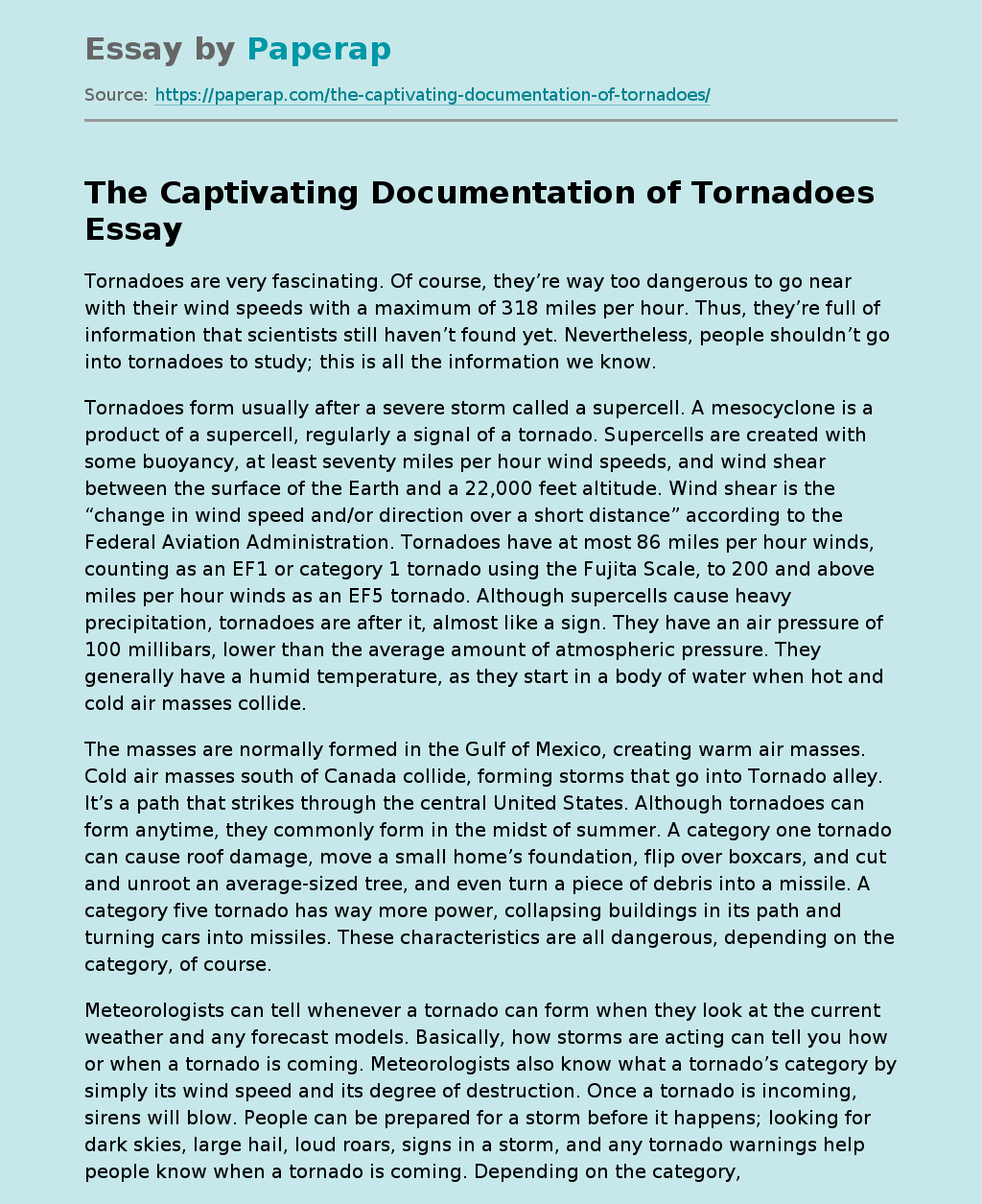The Captivating Documentation of Tornadoes
Tornadoes are very fascinating. Of course, they’re way too dangerous to go near with their wind speeds with a maximum of 318 miles per hour. Thus, they’re full of information that scientists still haven’t found yet. Nevertheless, people shouldn’t go into tornadoes to study; this is all the information we know.
Tornadoes form usually after a severe storm called a supercell. A mesocyclone is a product of a supercell, regularly a signal of a tornado. Supercells are created with some buoyancy, at least seventy miles per hour wind speeds, and wind shear between the surface of the Earth and a 22,000 feet altitude.
Wind shear is the “change in wind speed and/or direction over a short distance” according to the Federal Aviation Administration. Tornadoes have at most 86 miles per hour winds, counting as an EF1 or category 1 tornado using the Fujita Scale, to 200 and above miles per hour winds as an EF5 tornado. Although supercells cause heavy precipitation, tornadoes are after it, almost like a sign.
They have an air pressure of 100 millibars, lower than the average amount of atmospheric pressure. They generally have a humid temperature, as they start in a body of water when hot and cold air masses collide.
The masses are normally formed in the Gulf of Mexico, creating warm air masses. Cold air masses south of Canada collide, forming storms that go into Tornado alley. It’s a path that strikes through the central United States. Although tornadoes can form anytime, they commonly form in the midst of summer.
A category one tornado can cause roof damage, move a small home’s foundation, flip over boxcars, and cut and unroot an average-sized tree, and even turn a piece of debris into a missile. A category five tornado has way more power, collapsing buildings in its path and turning cars into missiles. These characteristics are all dangerous, depending on the category, of course.
Meteorologists can tell whenever a tornado can form when they look at the current weather and any forecast models. Basically, how storms are acting can tell you how or when a tornado is coming. Meteorologists also know what a tornado’s category by simply its wind speed and its degree of destruction. Once a tornado is incoming, sirens will blow. People can be prepared for a storm before it happens; looking for dark skies, large hail, loud roars, signs in a storm, and any tornado warnings help people know when a tornado is coming. Depending on the category, people shouldn’t worry about tornadoes. It’s something very scary, yes, but if you know the precautions, everything will be fine. First of all, move straight toward a shelter or basement. If you don’t have one, find a hallway, stairway, or hard interior piece to hide under. Make sure to close windows and to stay away from them. If you were outside or in an automobile, drop to the ground and become flat in a divot or depression (depression is a sunken or hollow surface).
Two of the most well-known tornadoes in America were the Tri-State and the 1999 Bridge Creek Moore Tornadoes. The Tri-State Tornado was and still is the deadliest tornado the United States has ever seen. It struck after a supercell on March 18, 1925, in Missouri, Illinois, and Indiana. The tornado took 695 lives and left America decimated. On the other hand, the Bridge Creek Tornado was famous for breaking a world record. On May 3, 1999, in Oklahoma, the tornado, measured by a doppler on wheels, had wind speeds around 318 miles per hour. These tornadoes from recent years show that climate change has affected the power and frequency of tornadoes.
All things considered, tornadoes are very intricate and very ominous. They can be harmless as crumbling up leaves but can have winds 16 miles faster than the fastest car, the Hennessey Venom F5, which goes 301 miles per hour. Always stay safe around a tornado, and be prepared for the things to come.
The Captivating Documentation of Tornadoes. (2021, Dec 03). Retrieved from https://paperap.com/the-captivating-documentation-of-tornadoes/

